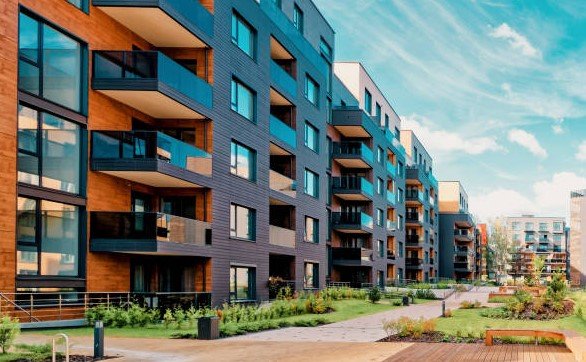Israel’s National Committee for Planning and Construction has approved a major development project in South Glilot, paving the way for nearly 20,000 new homes in northern Tel Aviv. This decision, made on September 4, 2025, comes after years of planning and aims to address the growing demand for housing in the bustling metropolitan area, though it faces strong pushback from nearby Ramat Hasharon.
Project Overview and Key Features
The South Glilot plan covers about 1,700 dunams of land, shared between Tel Aviv and Ramat Hasharon. It boosts the number of housing units from an initial 18,500 to 19,320, creating a vibrant new neighborhood with homes, commercial spaces, and green areas.
This development sits between key roads like Derekh Namir, Road 5, and the Ayalon Highway. Planners have included 480 dunams of open space, sports facilities, and a commercial center to make it a self-sustained community.
Once fully approved after a period for objections, the project will allow building permits to move forward. It builds on land that once held fuel storage tanks, now cleared for modern urban use.

The design comes from a team led by architect Uri Mazor, who notes the plan has evolved since the 1990s to fit current needs like better transport and infrastructure.
Here are some standout elements of the project:
- Residential focus with mixeduse buildings to blend living and working spaces.
- Integration with upcoming metro and light rail lines for easier commuting.
- Emphasis on green spaces to preserve some natural features amid urban growth.
Economic Boost and Revenue Potential
Stateowned land makes up 80 percent of the site, positioning the government to gain big from land sales. Experts estimate revenue could top 30 billion shekels, based on at least 2 million shekels per unit in land value.
This influx could fund major infrastructure upgrades, including utilities like electricity and gas. Private owners hold the remaining 20 percent, adding to the mix of investments.
The project ties into broader efforts to tackle Israel’s housing shortage. Recent data from 2025 shows home prices in Tel Aviv have risen 8 percent yearoveryear, making new developments like this crucial for affordability.
It also aligns with national goals, such as the Greater Tel Aviv Metro approval in July 2024, which will connect the area to the wider region and spur economic activity.
Opposition from Ramat Hasharon and Environmental Concerns
Ramat Hasharon officials have voiced sharp criticism, calling the plan a threat to local landmarks like a major daffodil field and a key drainage lake. They argue it ignores environmental impacts and could strain water and traffic systems.
Despite a recent agreement with the Israel Land Authority worth 10 billion shekels for new neighborhoods, the city sees this as overreach that harms their community.
Environmental groups echo these worries, pointing to potential flooding risks and loss of open land. A 2024 report highlighted similar issues in other urban projects, where rushed developments led to infrastructure failures.
Public sentiment on social media reflects division, with some praising the housing boost and others fearing it will disrupt local ecosystems.
| Aspect | Details | Potential Impact |
|---|---|---|
| Housing Units | 19,320 | Addresses shortage in highdemand Tel Aviv area |
| Open Space | 480 dunams | Provides parks and recreation amid city growth |
| Revenue Estimate | Over 30 billion shekels | Funds infrastructure and public services |
| Timeline | Approval in 2025, building postobjections | Could start construction by 2026 |
| Opposition Points | Environmental damage, traffic strain | May lead to legal challenges or revisions |
Historical Context and Planning Journey
Planning for South Glilot began over 20 years ago, facing delays from changing priorities and opposition. Early versions in the 1990s were shelved, allowing for updates that now include modern transport like metro lines.
This fits into Israel’s push for more homes, with over 100,000 units approved nationwide in 2024 alone. The project echoes others, like the Pi Glilot compound promoted as Tel Aviv’s “new north,” blending residences with offices.
Architect Mazor highlights how shifts in urban thinking have shaped the final plan, turning it from a suburb into a metropolitan gateway.
Future Implications for Tel Aviv Region
Looking ahead, South Glilot could transform northern Tel Aviv into a hub for young families and professionals, easing pressure on crowded city centers. It may set a model for balancing growth with sustainability in other Israeli cities.
However, ongoing objections could delay progress, especially after the holidays when the plan opens for public input. Experts predict it will spark debates on urban planning in a country facing rapid population growth.
If successful, it might inspire similar largescale projects, helping to curb rising rents that hit 5,000 shekels monthly for averagesized apartments in Tel Aviv as of mid2025.
What do you think about this development? Share your views in the comments below and spread the word to keep the conversation going.
